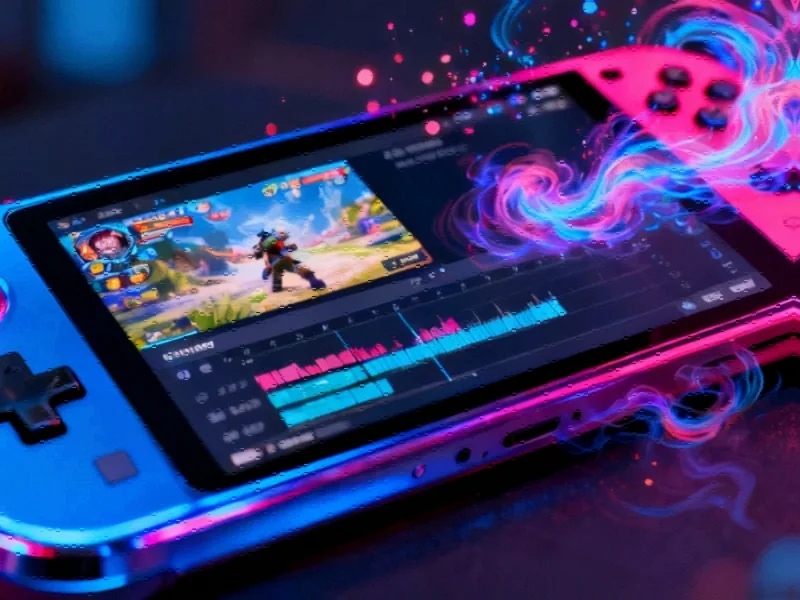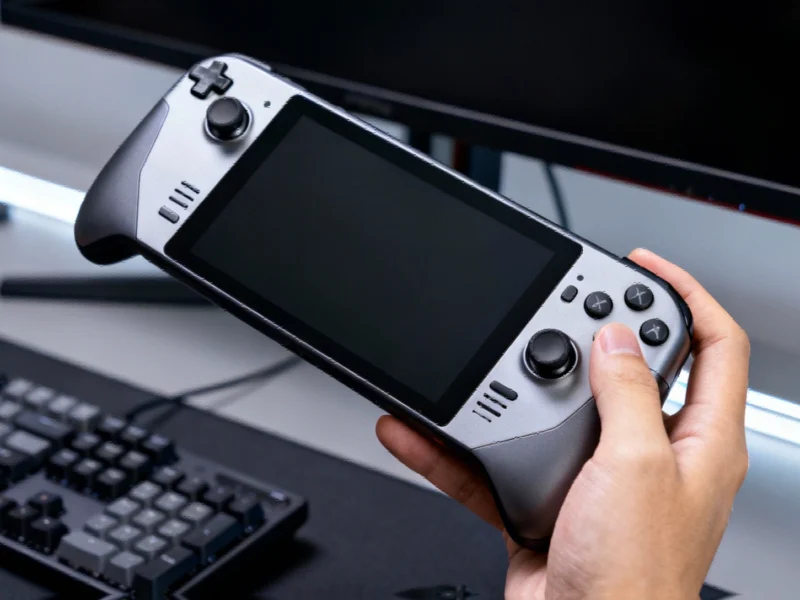Portable Powerhouse Challenges Traditional Computing Categories
According to reports from Japanese publication PC Watch, the GPD WIN 5 from Shenzhen GPD Technology represents a significant shift in portable computing, packing desktop-grade performance into a frame that reportedly fits comfortably in one hand. This development appears to challenge conventional ideas about what constitutes a serious personal computer for both gaming and professional applications.
Workstation-Grade Performance in Handheld Form
The device reportedly integrates AMD’s Ryzen AI Max+ 395 processor, a 16-core, 32-thread chip capable of boosting up to 5.1GHz. Sources indicate this central processing unit rivals high-end desktop systems and represents one of AMD’s best CPUs for compact systems. When paired with the Radeon 8060S GPU featuring RDNA 3.5 architecture and 40 compute units, analysts suggest this combination pushes the device well beyond the limits of most handheld gaming systems.
The report states that Cinebench R23 results show the GPD WIN 5 potentially surpassing AMD’s 32-core Ryzen Threadripper 2990WX workstation CPU, making it a surprisingly capable machine for demanding tasks like video editing. This performance level in such a compact device reflects broader industry developments toward miniaturization without sacrificing power.
Thermal Management and Design Innovations
With such processing power in a small enclosure, thermal management becomes critical. The report indicates GPD implemented a dual-fan cooling system designed to manage the high 70W power output while maintaining stability under heavy workloads. This approach to thermal challenges represents significant related innovations in compact computing.
To address both weight and heat concerns, GPD introduced a unique detachable battery system that allows users to remove the heaviest component while maintaining external power through a cable. While this effectively lightens the unit during handheld play, sources indicate it introduces some awkward cable placement and setup complexity that may impact user experience.
AI Integration and Memory Configuration
The device’s processor reportedly excels in systems requiring strong artificial intelligence support with its integrated GPU, positioning it well for emerging applications. This aligns with growing market trends toward AI-enhanced computing across device categories.
The GPD WIN 5 supports quad-channel LPDDR5X memory and offers SSD storage options up to 4TB, with expansion through a new Mini SSD slot. These specifications, according to the analysis, place it close to workstation territory in terms of multitasking capability and data throughput, continuing the evolution of the GPD Win product line.
Practical Considerations for Professional Use
Despite the impressive benchmark numbers, analysts suggest relying on a handheld device for sustained rendering or editing tasks may stretch beyond its intended scope. The report states that even with its dual-fan cooling solution, questions remain about long-term thermal performance, fan noise, and stability during extended heavy workloads.
The device features a 7-inch 120Hz full HD display that balances portability with smooth, detailed visuals for both gaming and editing applications. However, professionals considering the switch from traditional workstations must weigh the convenience of portability against potential limitations in sustained performance, similar to considerations around recent technology implementations in other fields.
Broader Industry Implications
The emergence of devices like the GPD WIN 5 reportedly signals a broader trend of performance convergence between specialized categories of computing devices. As noted in market trends across various sectors, the boundaries between product categories continue to blur as technology advances.
This performance convergence in compact form factors represents just one aspect of how technology landscapes are evolving, mirroring related innovations seen in other industries where traditional categories are being redefined by new capabilities.
This article aggregates information from publicly available sources. All trademarks and copyrights belong to their respective owners.
Note: Featured image is for illustrative purposes only and does not represent any specific product, service, or entity mentioned in this article.


